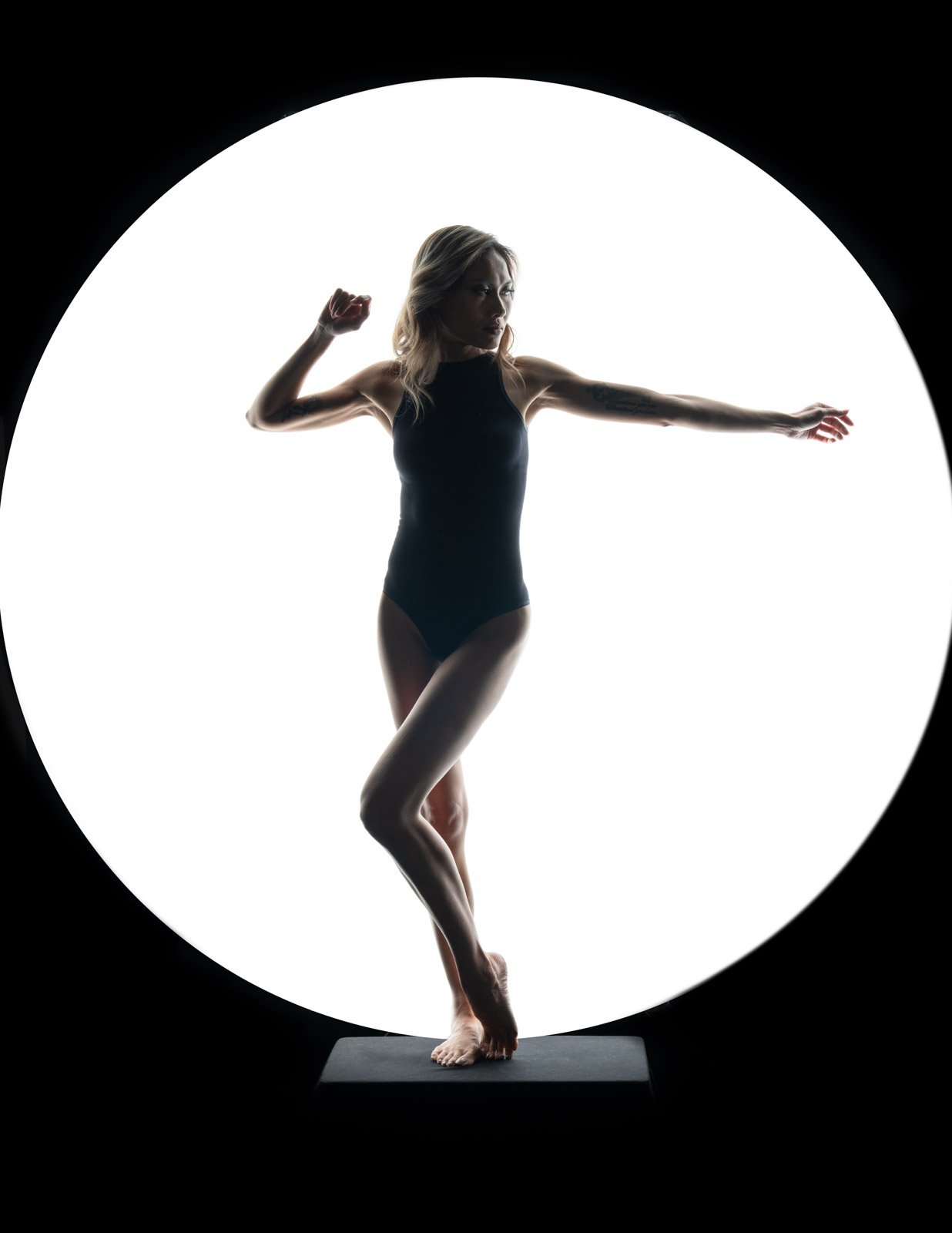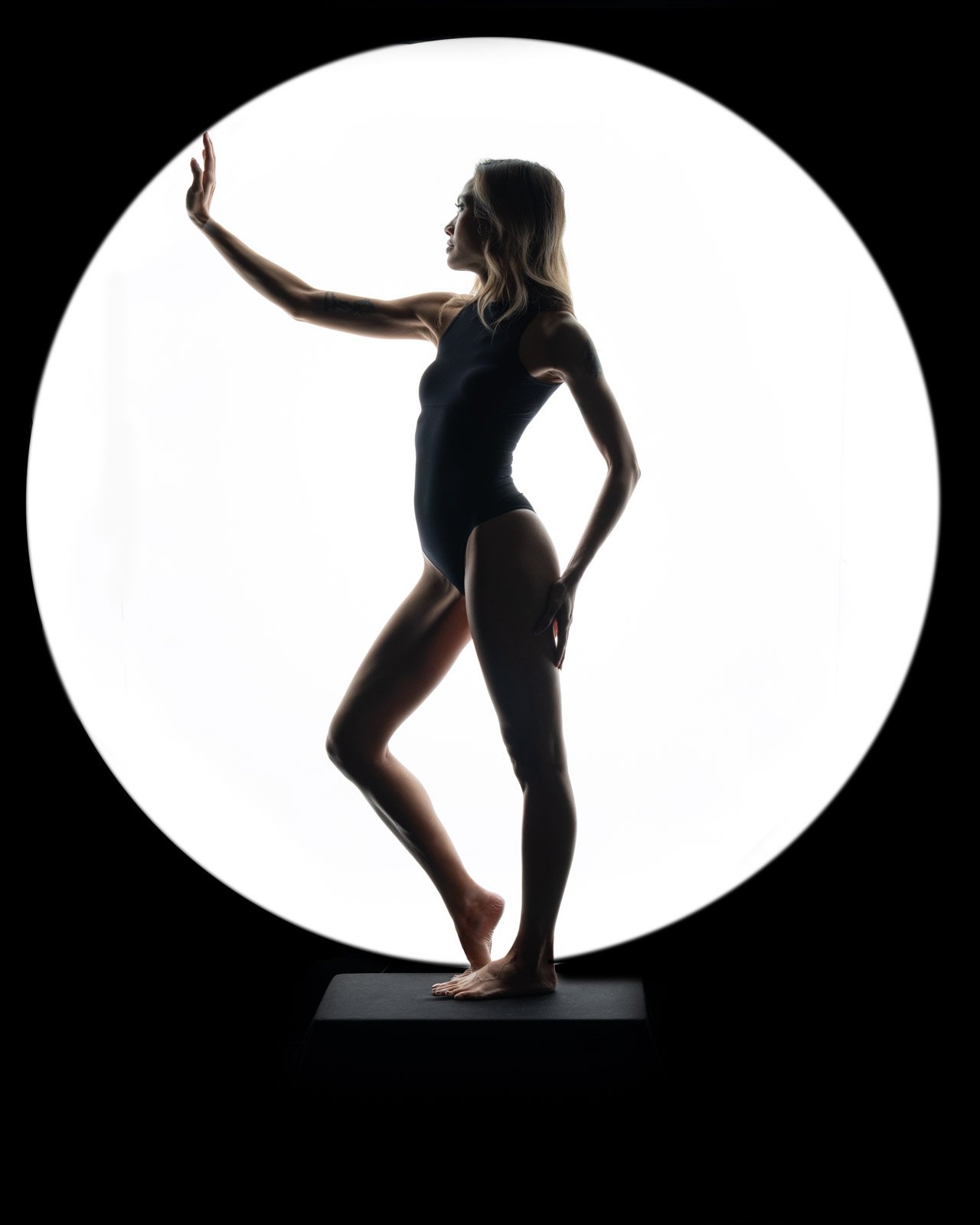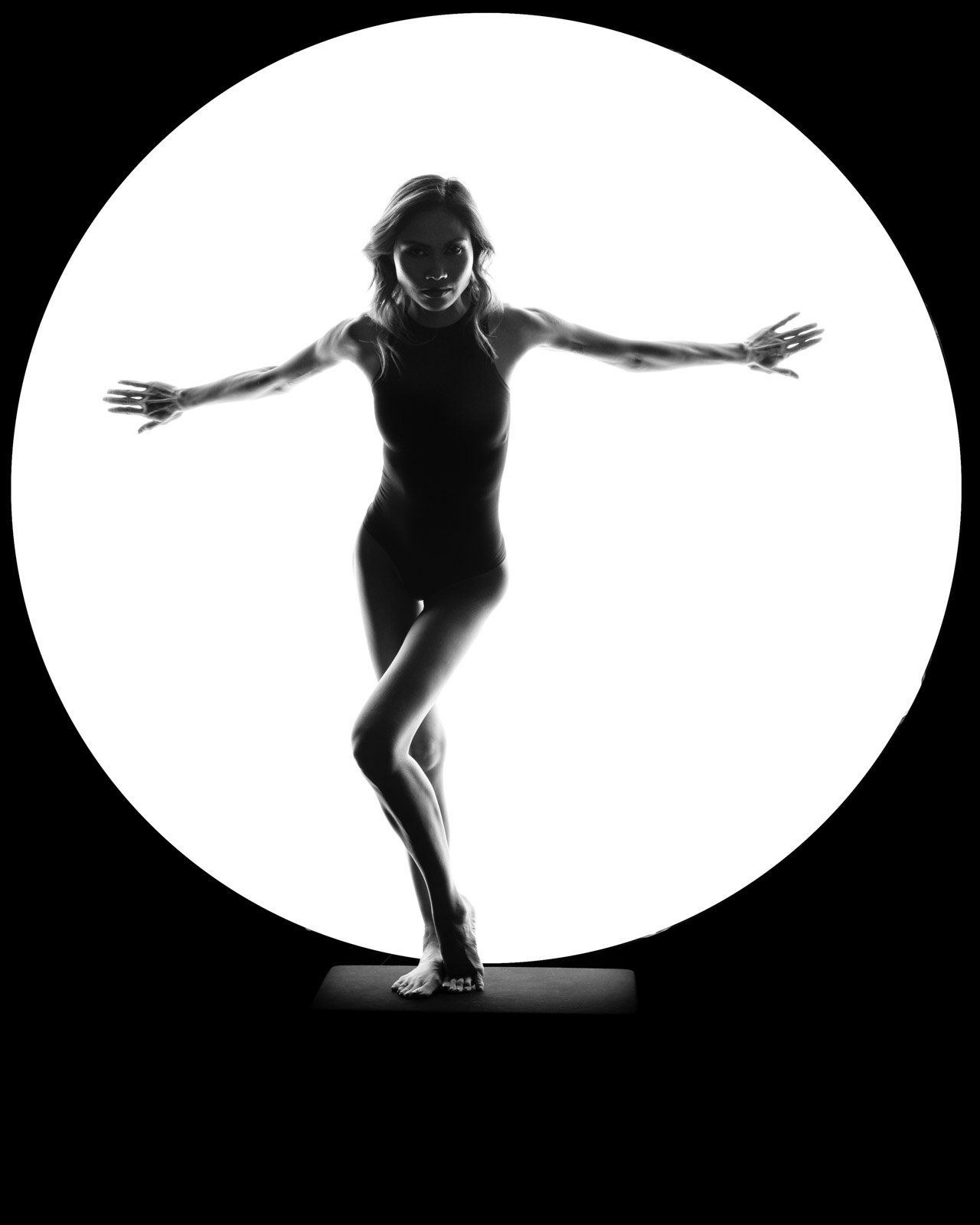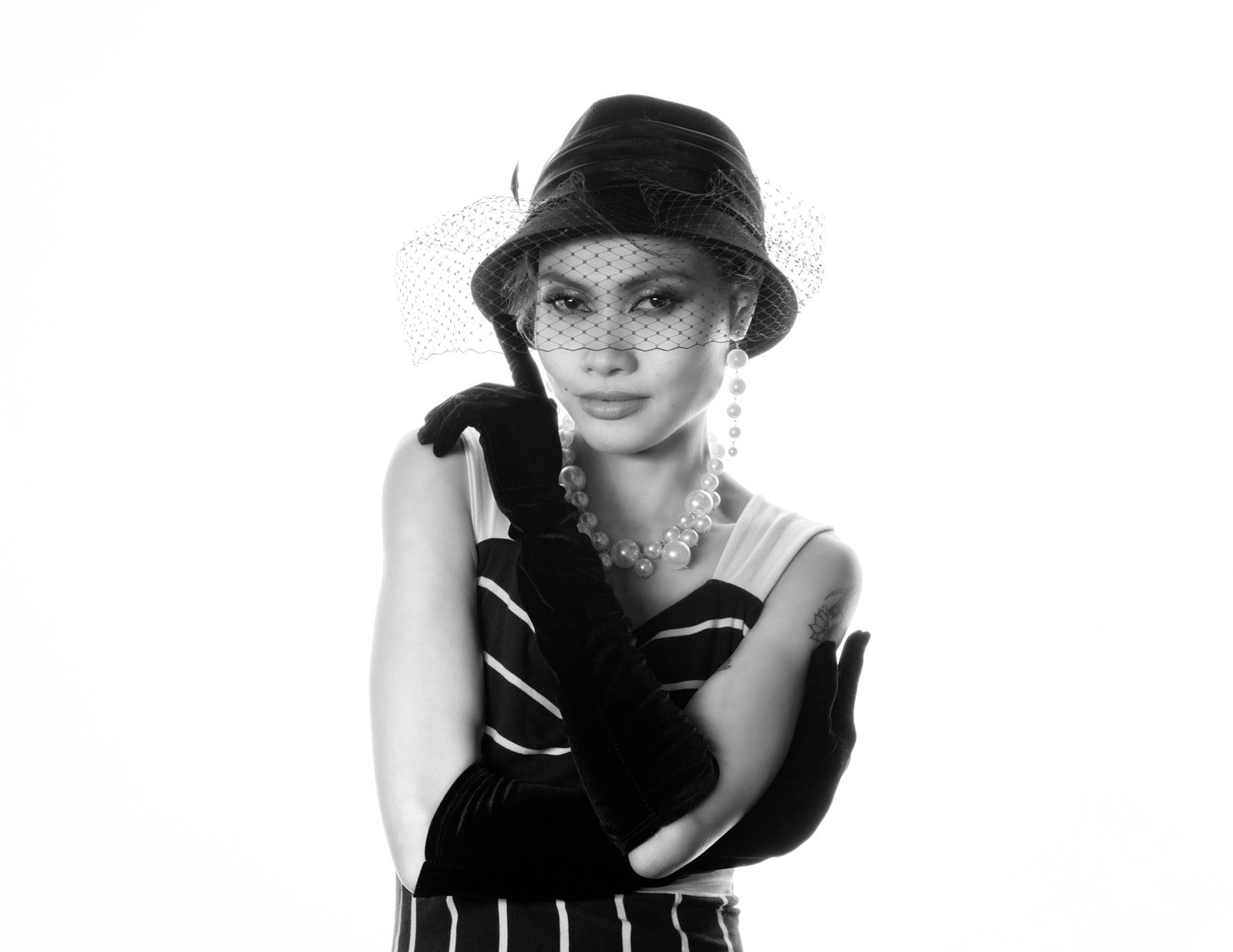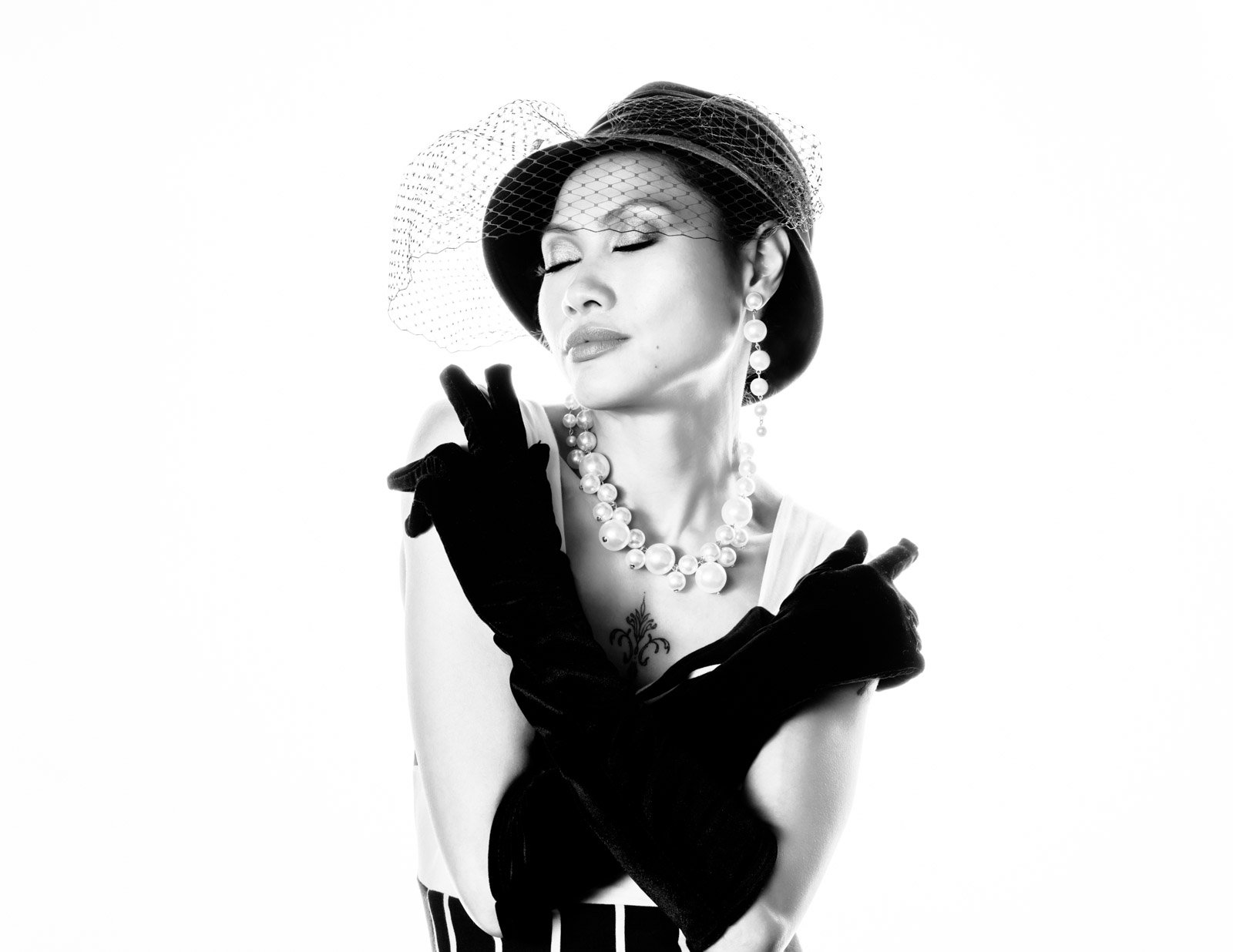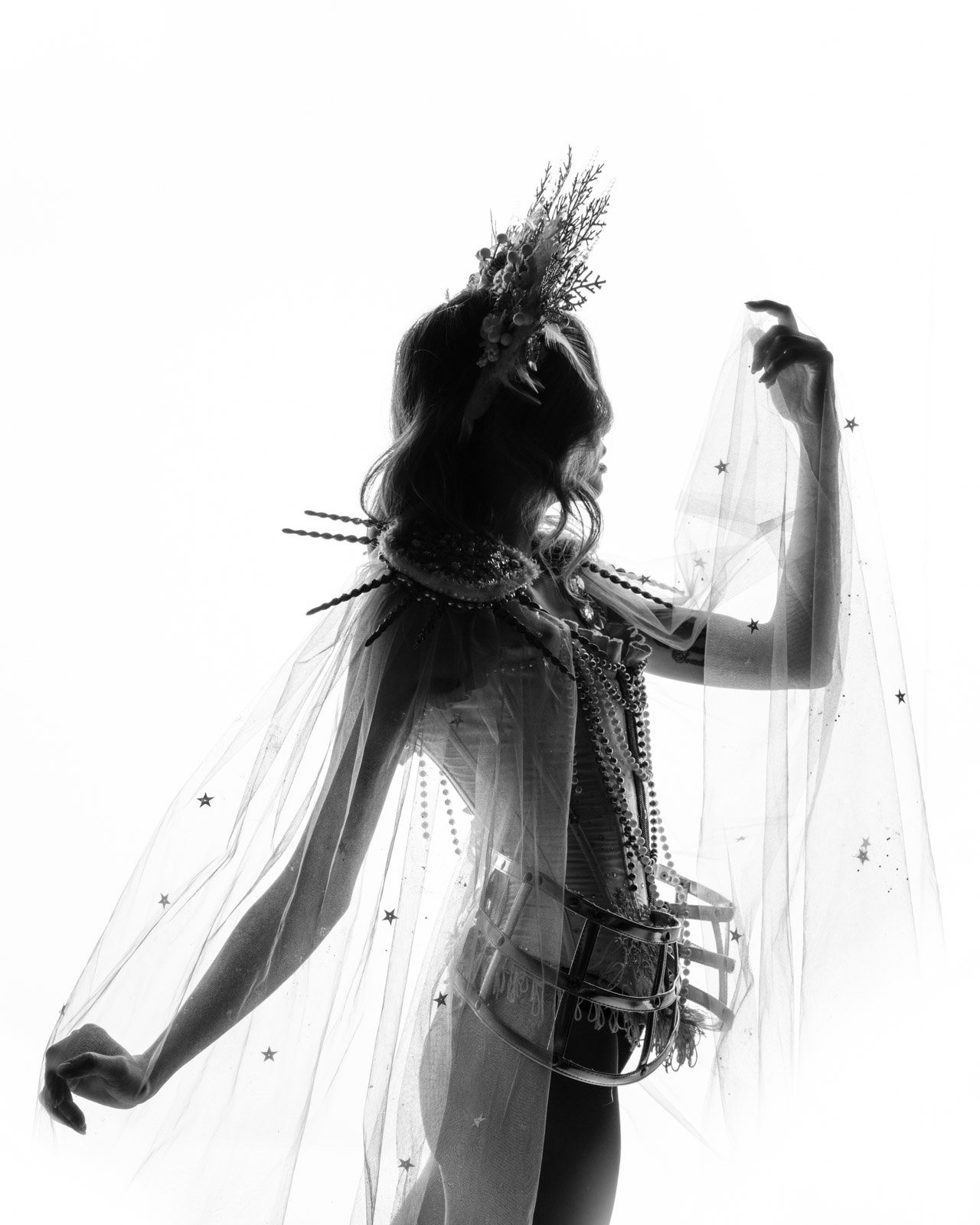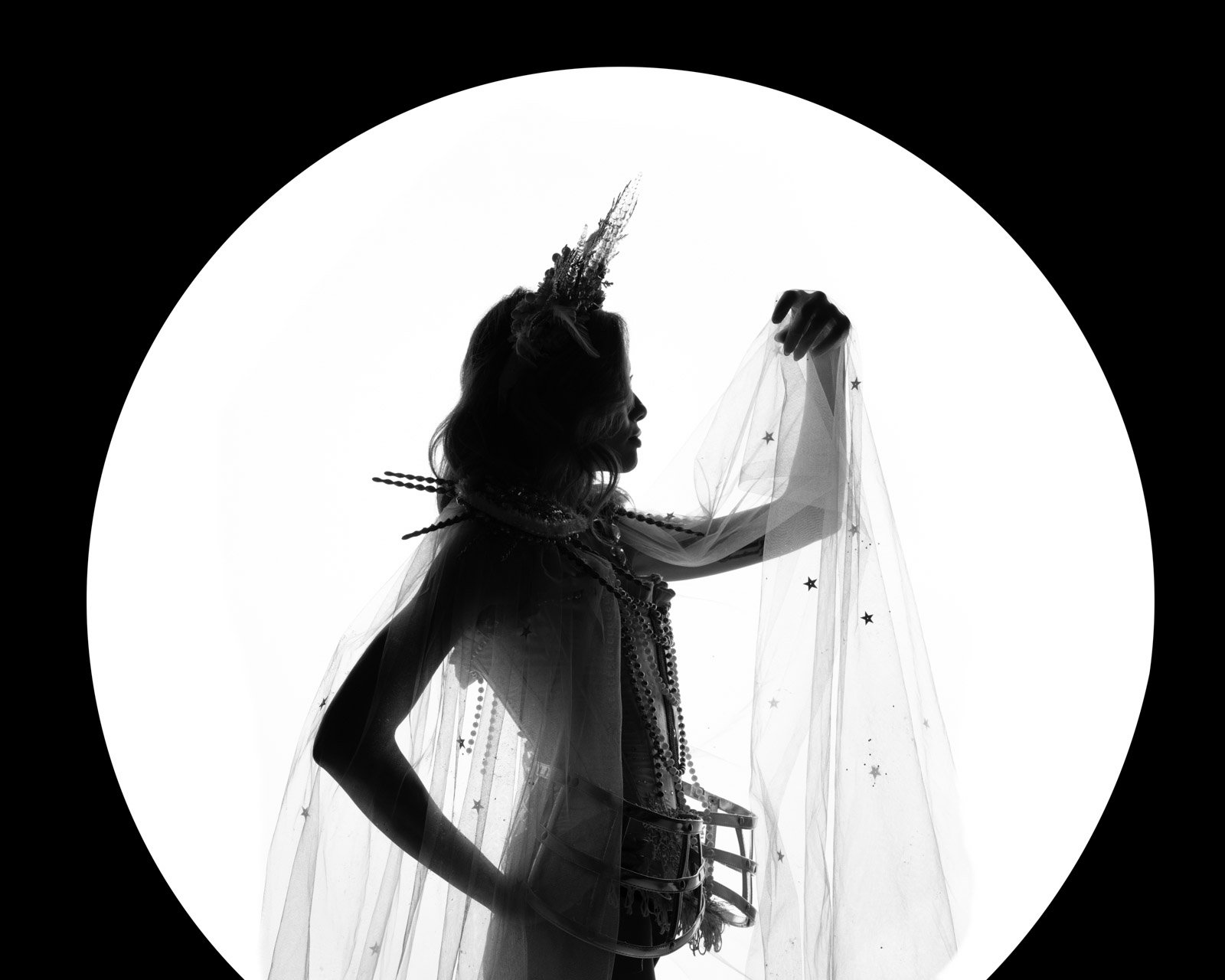Stepping into the light: Mastering dramatic portraits with backlighting
Forget the flat, studio flash. You know the classic Clamshell or Rembrandt lighting. Backlighting, where the light source comes from behind your subject, injects a captivating drama and dimension into creative portrait photography. It’s a technique used by countless photographers to create striking and unforgettable images, outside of the studio. But let’s delve into the world of backlighting in the studio and explore how to harness its power for your creative portraits.
The magic of silhouette
The most basic use of backlighting creates a powerful silhouette. With the subject positioned between you and the light source, their form becomes outlined against a luminous background. This technique works particularly well for mysterious, edgy portraits, or when you want the focus to be on the subject’s pose and gesture rather than facial details.
Crafting depth and dimension
Backlighting isn’t just about silhouettes. When used strategically, it can add incredible depth and dimension to your portraits. Hair becomes a halo of light, edges and features are highlighted, and the background melts away, creating a dreamlike quality. Experiment with the angle of the light source – from high behind the subject for a more ethereal look, to a lower angle for dramatic shadows and a more defined form. You can even use the softbox as your background like I did.
Finding the balance: Exposure and fill light
One of the challenges of backlighting is ensuring proper exposure. The subject’s face can easily become underexposed, appearing dark and shadowy. Here are some techniques to achieve the right balance:
Exposure Compensation: Adjust your camera’s exposure compensation to brighten the subject while maintaining the dramatic effect of the backlight.
Fill Flash: A carefully placed flash can add a touch of light to the subject’s face, revealing details without diminishing the drama of the backlight, like we did here
Reflectors: Bounce light back onto the subject using a white reflector. This adds a soft, natural-looking fill light without overpowering the backlight.
Beyond the basics: Experimentation is key
Backlighting is a versatile technique that opens doors to creative exploration. Experiment with colored gels on your light source to add a touch of vibrancy to the background. Use natural elements like windows or sunsets for stunning backlit portraits. The possibilities are endless!
So, step out of your comfort zone and embrace the drama of backlight. With a little practice, you’ll be capturing captivating portraits that leave a lasting impression.
All images captured by placing the model directly in front of a giant 5′ octobox. Check out the behind-the-scenes for a workshop I ran on backlighting on YouTube.
Model: Jolie Nguyen


